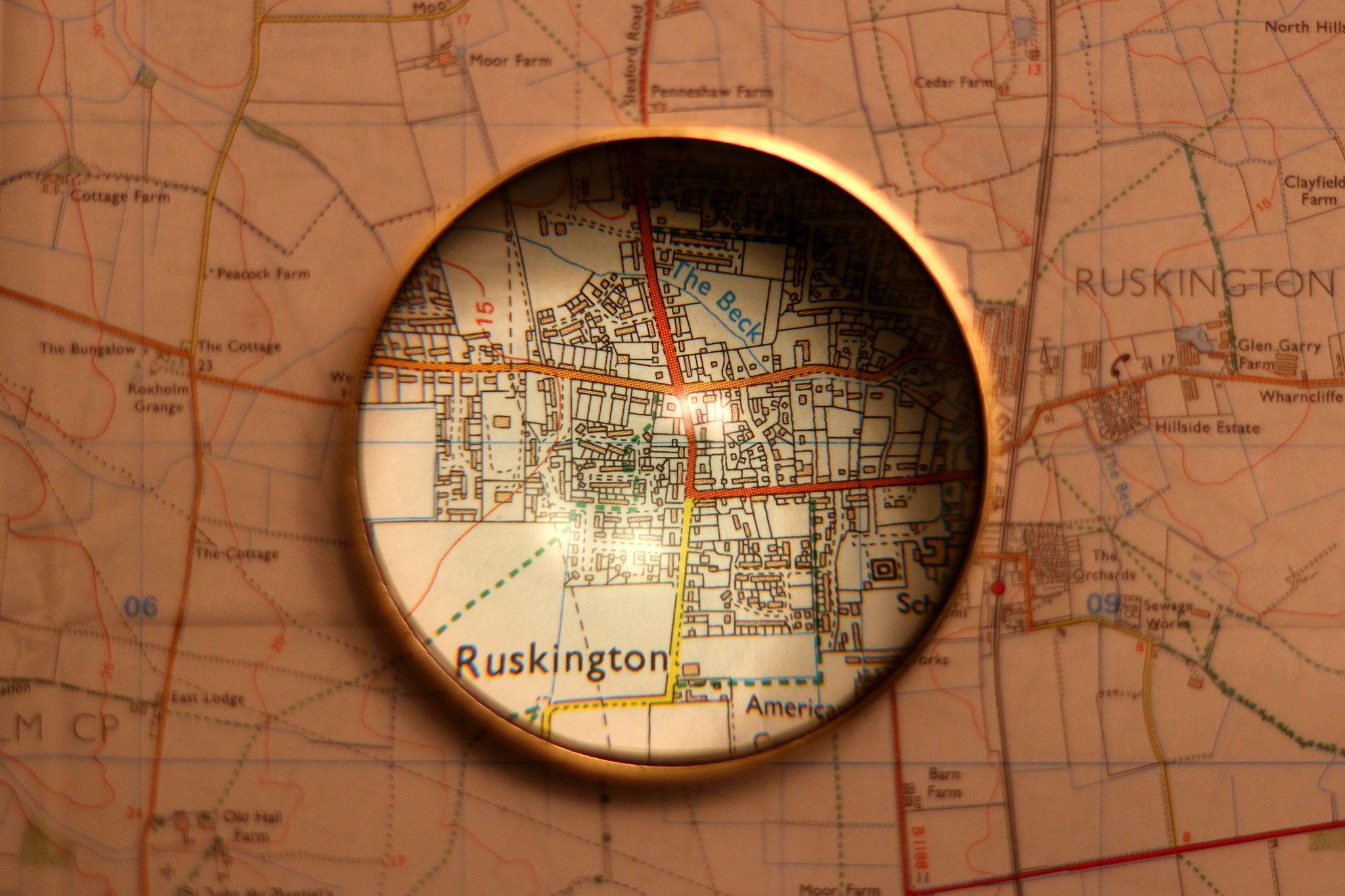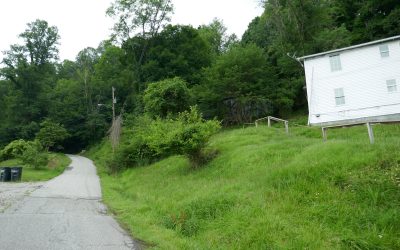Over on the About page I mentioned that I thought my duplex used to belong to a lady name Kennedy. I thought this because I did some background research before placing my first bid.
Here are a few of the things I did.
To start with, I found the Clendenin house in an auction listing. That auction told me the address, gave me a few photos, and also mentioned that this property had gone through a tax lien sale.
That really doesn’t tell me much, but it did give me a place to start. So the first thing I did was Google the street address, and then open Streetview in a new tab:
1. Google Streetview
Google’s records are not 100% comprehensive, but if you are lucky you will find that they drove a camera by the property you are interested in. If you’re really lucky they will have driven past the property recently. (And if you are extremely lucky they will have driven past the property several times, giving you specific clues how and when the property was maintained.)
Google Streetview can tell you a lot about a property, and also about the neighborhood. You want to buy the worst house in the best neighborhood, and not the other way around, and this is something you can learn via Streetview. Be sure to look very carefully, because sometimes something as simple as a culvert in a ditch next to a road will tell you a house used to be there (the culvert was under the old driveway ).
Once I am done (for now) with Streetview, I check the various real estate websites.
2. Zillow, etc
The really cool thing about the modern real estate market is that there are a lot of sites like Zillow which aggregate current and past info on real estate properties listed and sold in various markets. This sites will grab a copy of a property listing and hold on to it forever. They also track how much a property sells for.
While the data is not 100% reliable or comprehensive, you can often get a snapshot of what a property looked like at a certain point in time. For example, my mother found two listings for a Craftsman style bungalow which showed how someone screwed up a remodel by gutting the gorgeous cabinetry (before, after).
You can also use Zillow to get a sense of the potential resale value after you remodel the property. To give you one example, I am buoying the Clendenin house for under $7k, and if I do a good job cleaning it up and remodeling it I could sell it for as much as $100k (if not more).
Once I have finished with the real estate sites, I open a new tab and head to Youtube.
3. Youtube
Drones have become quite common now, and they have cameras. This means that if you search on Youtube for the town or neighborhood where your property is located, you have an increasingly good chance of finding an aerial video of your property. This is how I found the video I posted on the about page. While that video is 6 years old, it still gives me a goof general sense of the state of the town.
4. Delinquent Property Reports
This is called different names depending on where you live, but a lot of counties and cities maintain a list of properties with delinquent real estate taxes. Often times you will find this as a PDF on the government website.
Take the Clendenin house, for example. It’s located in Kanawha County WV, where real estate taxes are collected by the sheriff’s dept. I did not find a list of delinquent properties, but I did find PDF of properties whose tax liens were being sold last year. My house was on that list, which is how I learned that the real estate taxes had not been paid for over ten years. It also told me that the late owner was still on the deed even though she had died 5 years previously. (No one managed the estate, or put it through probate.)
Edit: that might be a mistake. I found an obit for a different Anna Kennedy who died in 2019. She lived a lot closer, so there’s a good chance that this was the former owner (it’s really not clear).
5. GIS
GIS, or Geographic Information System, is a database where a county or city keeps all its maps for the public to view. A GIS can usually be found via a government website, and can include everything to water and sewer lines to lot boundaries, names and addresses of owners, etc.
Some would say the GIS should be higher on this list but I have found most GIS to be so clunky that I look for web resources first. I do still check the GIS, though, because this the quickest way to tell what your lot boundaries are.
Also, sometimes the GIS will include obscure resources such as old aerial maps which can give you hints about when a property was remodeled, torn down, etc. For example, I found the GIS useful in the Southampton County fiasco because it had several sets of aerial maps which were taken across 14 years. I used the presence and then disappearance of houses (the county tore them down) to help pin down the location of the lot I won in the auction.
How did I know the county tore down the houses?
6. Newspapers, Obits, etc
I have not found newspapers and historical records to be very useful, but I do still search for news about any previous owners or stories about the street or neighborhood my property is in. This was actually what gave me the clue that houses had been torn down (including one that belonged to the previous owner and had stood on the lot I won in the auction), which I later confirmed with the GIS.
I have also found searching for obituaries to be a useful way to confirm the identity of a previous owner. (A lot of properties go up for tax sale when the previous owner gets old or dies and there is no one managing the estate.)
But that’s not how I find the owner, usually.
7. Ownerly.com
This is a $30 per month online service which you can use to search for info on a property or a person. It will aggregate all of the info it finds in various databases, and give you a list of what it found. This is how I start looking for previous owners and tenants, and find their contact info.
For example, Ownerly told me the previous owner had died in 2016, and looking for her obituary confirmed that detail.
* * *
While the above list looks comprehensive, I am sure more knowledgeable investors will tell you that it’s just the beginning. And they are right. You should always do as much research as you can; you never know where you might find something useful.
image by Kevin Doncaster via Flickr



0 Comments